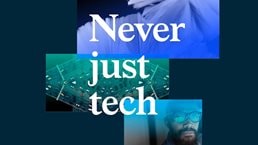The promise and peril of cloud is a common refrain in many C-suites: huge economic potential and regularly underperforming reality. What’s much less clear, however, is what to do about it.
Out of the more than 80 enterprises McKinsey profiled for its CloudSights database, 40 percent have found limited value in their cloud programs. In addition, half of companies five or more years into their cloud journey still have not achieved 20 percent cloud adoption. The underlying causes are often hard to pinpoint and articulate, or are simply caught too late to stop the damage. Even for companies that are well on their way to achieving value from cloud, it is often difficult to communicate progress to stakeholders and make a credible case, based on clear ROI data, for substantial new investments.
Given the significant resources of time, money, and people that companies invest in cloud transformations, it’s surprising how poor the metrics and objectives and key results (OKRs) used to track progress often are. For example, some companies will exclusively use point-in-time metrics (for example, number of applications migrated by a given date) to understand where their cloud program is. These metrics, however, frequently fail to accurately capture the full picture of progress over time. Other cloud programs will set their OKRs without involvement from the business side and, as a result, struggle to actually measure and articulate the enterprise value cloud is creating. In many cases, cloud teams will also lack clarity over who is accountable for which metrics and how they are being reported and used. The difficulty often boils down to lack of clarity about what is important to measure and lack of rigor in implementing a tracking program.
Well-designed dashboards and central governance drive transparency and increase data-backed decision making in effectively identifying roadblocks and resolving them. Great dashboards help visualize trends and issues over time to identify when and where leaders should intervene. OKRs reflect the enterprise vision to ensure cloud is truly supporting top-line business goals, and they are consistently and clearly tracked with key owners and stakeholders for each set of metrics.

In our experience, there are eight dimensions that are important to almost any cloud transformation, and each has a corresponding dashboard (exhibit). Different metrics will take precedence with different stakeholders, and it is important to tailor each dashboard to an organization’s specific cloud program and stakeholders.

For a subset of these dashboards—dimensions C, D, and H, highlighted in gray in the exhibit—we have drafted examples of what their appropriate metrics might look like and what would be needed to set them up. Each dashboard example is focused on achieving one or more of the cloud program’s objectives and includes metrics that help track progress toward the relevant key results (KR).

For any company beginning or resetting its cloud-metrics journey, it is important to begin with a clear vision based on business objectives and define metrics and initiatives to support them. As cloud programs and value tracking mature, individuals should be assigned to “own” metric targets on the dashboards, report against them, and look for opportunities to automate the data tracking. A central governance team or cloud adoption office can regularly review progress against these metrics, flag risks and roadblocks, and coordinate interventions, such as assigning extra cloud resources to a struggling business unit. Organizations can set up a standard cadence to meet with key stakeholders to ensure that the cloud transformation is getting the desired visibility.
Implementing the technology and processes to support tracking cloud value capture is a significant challenge. Compiling data from multiple parties and data sources often requires development and maintenance of a dedicated resource.
A pharmaceutical company faced this issue during its cloud modernization program. Multiple parties were providing progress updates in their own formats, making it difficult to judge and compare progress or to have a view of the overall program. To address this issue, the team brought in a dedicated data modeling and visualization expert to develop a consolidated reporting dashboard. The team focused on creating standards for reporting to be used by all parties and automating the delivery of reports that tracked progress against objectives across workstreams, which went directly to program leadership and accountable parties every week or month. This approach made it much easier for workstream owners to track their progress, increasing their accountability. In one case, the team realized that a set of reports that focused on application migration did not include orphan-server shutdowns once apps were migrated, and, as a result, the full value of the migration effort wasn’t clear. The team added reporting on the status of 2,000 servers that would no longer be needed, shut them down promptly, and realized $30 million in savings.
Program governance teams can utilize reporting tools like Power BI, Tableau, and Qlik, which can pull data using different connection methods (such as manual Excel/CSV uploads, ODBC, REST API) and any additional data workflow automation tools available to support automated refreshes, data cleansing, and data normalization.
The cloud transformation journey is difficult and often doesn’t go according to the initial road map and business case. Through improved tracking, companies can better understand and de-risk their progress, manage stakeholders, and focus their efforts toward driving business value through cloud.
“Our firm is designed to operate as one—a single global partnership united by a strong set of values. We are equally committed to both sides of our mission: attracting and developing a talented and diverse group of colleagues and helping our clients create meaningful and lasting change.
From the C-suite to the front line, we partner with clients to help them innovate more sustainably, achieve lasting gains in performance, and build workforces that will thrive for this generation and the next.”
Please visit the firm link to site


